|
After my letdown visit to Indiana Dunes National Park, I was thrilled to head to one of the mighty Out West parks. Crater Lake National Park. A running joke in our family is my dad coming up to a vista and spreading out his arms saying, "BEHOLD" as he viewed the splendor and the glorious sights below. Crater Lake is literally the epitome of doing that. "The Deep Blue Lake" is really a sight to behold when you first happen upon it and, as the deepest lake (1,949 feet) in the United States, I really suggest soaking this lake in on your next visit to Oregon, both literally and figuratively. A Brief History of Crater LakeI like history, but I'm really not the type that learns the history of the national parks when I visit them. Just give me all the sights, hiking, and activities, and I'm good. However, Crater Lake has an interesting story. Mount Mazama, a 12,000 ft. volcano, erupted 7,700 year ago destroying much in the way of its path and forming Crater Lake. Technically the lake itself is a caldera, a lake that fills a large volcanic depression, but the signs and advertisement were already printed for Crater Lake, and, well, money talks. Plus Crater Lake sounds better than Caldera Lake. The lake has no visible inlets or outlets, essentially no rivers run into it or out of it. For centuries, the Klamath and Modoc people, the Yahooskin Band of Northern Paiute Indians, and the Cow Creek Band of Umpqua Indians have maintained deep ties to what is now Crater Lake National Park. Their ancestors witnessed the collapse of Mount Mazama. In the 1850's, pioneers began exploring the west and looking for gold. These explorers stumbled about Crater Lake and deemed it the bluest water they had ever seen. In 1870, a young man from Kansas named William Gladstone Steel unwrapped his lunch, carefully contained in a newspaper. As he ate, he read an article about an unusual lake in Oregon. The story sparked Steel’s imagination and he vowed to see the lake for himself someday. Two years later, Steel’s family moved to Portland, Oregon; but another thirteen years passed before Steel finally gazed upon the beauty of Crater Lake. He was so moved that he decided that it should forever be a public park. His seventeen year quest to see Crater Lake established as a national park had begun. Now, Crater Lake receives 500,000 visitors each year. A 1-Day Guide to Crater Lake National ParkWe stayed at Sunriver Resort in Sunriver, Oregon. Crater Lake is an almost two hour drive from the resort. We rented a car for the day and made the trek. I first suggested stopping at Rim Village where you can eat, use the restroom, and check out the gear and shop. If you have the time and are looking for a more leisurely visit, do the 33-mile scenic Rim Drive which takes you around the lake and offers many panoramic and lake views. We only did part of the drive and decided to do a hike instead, The Watchman Peak Trail. This 1.7 mile out-and-back trail leads you up a moderately challenging, steep path that leads you to one of the best views of the lake and Wizard Island, a volcano within a volcano. I wouldn't necessarily consider this a kid-friendly hike, but if we weren't pressed for time, I think my son would have made it up and back. He lingered back with my dad, and the two of them made snowmen with the unmelted snow which many people stopped to take pictures with. We were on a schedule because we had signed up to take the Standard Boat Tour. To do any of the boat tours require you to hike 1.1 miles down a steep incline called Cleetwood Cove Trail. Just remember what goes down must go back up! We made it with plenty of time! Some people were nearly running down, and we were afraid they would trip and fall just to make it in time. MY HONEST REVIEW OF THE BOAT TOUR: 3.5/5 stars Yes, I'm glad we did it. Like any guided tours from national park be prepared for corny and kitschy jokes that kids will like but leave the adults groaning (or laughing like I did at how stupid they were). But we did learn a lot and got up close and personal with sights like Wizard Island, the Devil's Backbone, The Old Man at the Sea, Pumice Castle, Phantom Ship, and more. From this vantage point of the lake, you can really see just how magnificently blue and majestic the lake is. Plus, we even got to fill up our water bottles with lake water. It's that pure! The downfall was that it was two hours and with the up and down hike, this took up a majority of our time at the park which was really okay with us. I could spend a lot of time looking at the lake from above, but I liked doing something different than just taking in different views of the same thing from the Rim Drive. However, I think they could shorten the tour to an hour. I also agree with my brother that the tour was a little more academic and scientific than I would care for. It was a hot day and when we idled, we couldn't catch a breeze. Cruising across the water was refreshing and relaxing. I would have liked more of that. Afterwards, dip your toes in the freezing water, and if you're daring actually get in! The hike up is challenging! Beware. We saw many people struggling. However, reaching the top felt like an accomplishment, and I was proud of my 5-year-old for making it up. By this point, we were tired, dirty, and hungry and decided to call it a day. We felt like we had seen all that we wanted to see and left satisfied and satiated. So far this park ranks 6 out of the 16 parks I have been to. Check out the parks here. READ MORE ABOUT MY TRAVELS TO NATIONAL PARKS HERE My goal now is to become a certified sleep and anxiety coach and as part of that I developed a mini STRESS FREE SLEEP email course. I highly suggest checking it out if you struggle with sleep and panic. Buy me a coffee if you liked this blog. And if you're a parent, check out my parenting guide Now What? Mindful Parenting Checklists for Life’s Hard Moments.
0 Comments
*This blog is satire. Someone should really check up on Gary, Indiana and maybe pour an iota of a care into the city. Also, I respect the National Park System and their efforts to preserve land, but maybe, you know, just put a little * after Indiana Dunes National Park as a disclaimer that this park stinks. * On a recent trip to Chicago, I was determined to get to Indiana Dunes National Park to check off another national park on my list. The last time in the Windy City didn't go as planned. This time was going to be different. When my husband's company announced that their annual team building work event would be in Chicago, I jumped on the opportunity to tag along because a.) My brother lives there and b.) I could see the Dunes. I was ready. Getting to the DunesI was not ready. The proverbial travel gods were out to get us again. My brother told us about Zip Car and how you could rent a car the day of your travel. That didn't work. We checked Uber/Lyft. Too expensive. We looked into public transportation. It would take too long. We researched Enterprise. No cars left. Things were looking dire when I found an app called Go Around and after filling out tons of paperwork and unknowingly putting down a $1000 deposit that I'm still waiting to get back (4 more days until it should come back into our bank account) I was able to rent a luxurious Hyundai Sonata that only had one major dent and no more than 50 scratches from a part of town which had a large amount of police presence which I walked to by myself under skies that threatened to rain at any minute. I picked up my dad, and we were off. If you ever visit Indiana Dunes National Park, the drive there is worth the trip. We followed a scenic route along the highway. The wonderful views of abandoned factories and industrial wastelands really popped against Lake Michigan in the background. There were so many of them that I was sad when they ended and we entered into Gary, Indiana. But hark! I shouldn't have been so disheartened. The vibrant, bustling city of Gary, Indiana really pinged at my dopamine levels. Who knew there could be so many different types of grays!? The peeling corporate gray paint from one building really meshed with the glacier gray of the abandoned building right next to it. And the moon gray dilapidated house really stood out next to the pure gray apartment complex's broken windows. We were highly disappointed when our sturdy rental car didn't break down in the city, for we would have loved to have spent more time in Garish Gary. Oh well, maybe next time. Indiana Dunes National ParkI was in no way confused by the fact that after barely leaving Gary, Indiana we arrived at a national park. Much like Yosemite and the Grand Canyon and Arches, Indiana Dunes National Park really stood out and could hold its own. Upon walking out onto the beach of Lake Michigan, we were greeted with the Chicago skyline directly in front of us. And behold! What's this? Factories to the left of me. Factories to the right. Here I am stuck in the middle with what I'm sure is clean water to swim in. My dad and I soaked in the sights and inhaled the fresh air for about an hour on the beach before deciding that the beauty was too enchanting, and we just had to switch to a different activity. Before beginning our hike, we got to witness a show. A drunk lady accused a man and his children of theft (they weren't white). The man was emptying out all of his things and pleading with her that he didn't steal anything. A MAGA hat wearer with a bald eagle on his shirt stood nearby with his hand inching closer to his non-concealed weapon. After a lot of heated words, the fight disbanded, and I applauded everyone for being respectful and not overreacting. Then, we hiked Dunes Succession Hike. Do not let the name of dunes in the hike and park fool you. You CANNOT actually walk on or slide down the dunes or experience any pleasure of sand dunes like you can at other places that have dunes that ARE NOT national parks. We weren't disappointed. The .9 mile hike leads you up stairs for a better view of the lake next to the factories and then winds into the forest and finally ends on the beach. We, then, left and headed back to Chicago where we visited Barstool Headquarters, and we did the Yak Gauntlet. I looked up the rest of the park, and I really don't think we missed much. In all seriousness, I would never recommend taking a trip solely to this park. I wouldn't even recommend doing a daytrip here from Chicago if you happen to be in the city. This park was merely a checkoff for me and not worth the nearly $150 I spent getting there (not to mention the $1000 deposit that for the love of God I better get back). My goal now is to become a certified sleep and anxiety coach and as part of that I developed a mini STRESS FREE SLEEP email course. I highly suggest checking it out if you struggle with sleep and panic. Buy me a coffee if you liked this blog. And if you're a parent, check out my parenting guide Now What? Mindful Parenting Checklists for Life’s Hard Moments.
5:45 AM: My alarm goes off and for a few seconds I’m groggy and have no idea what is happening. 5:45.30 AM: I figure out that the cacophonous clanging sound is my alarm, and I work to disassemble it. 5:46 AM: My brain is settled now, and I take a few deep breaths getting ready to tackle the day. 5:47 AM: I remember. I used to remember the exact moment I woke up — the realization crashing upon me like a wave during a treacherous storm. Now, I’m up to two minutes. I don’t know if that should make me proud or disconcerted. Proud that I’m getting better. Or disconcerted that she is slipping further from me. 5:48 AM: My mom is dead. I say that phrase many times throughout the day. Sometimes those four words stab me in the heart. Other times, I say it matter of factly like I do every morning. It’s my true alarm. It wakes me up every day, and I roll those words around on my tongue a few times to see how it makes me feel. At this point in the day, it is what is. Nothing I can do about it. I reach for my phone to play my morning word games and puzzles. 5:55 AM: I get out of bed and read a page from my daily grief reflections. I force the words to comfort me. Sometimes they really do. 5:57 AM: I write down four things I am grateful for. Each day, I struggle to come up with something other than my mom. 7:00 AM: I won’t bore you with the minute details of how I arrive to work each day, but by 7:00 AM I arrive at my classroom, and I oblige to the fact that life has to go on, and I must participate in it as if the worst thing to ever happen to me hadn’t happened. 7:15 AM: I jot down a few things to my mom in the journal I keep of all the things I wish I could say to her. I close it and store it away before any of my students arrive. 7:25 AM — 10:30 AM: I’m distracted with teaching my 1st and 2nd periods. We joke. We laugh. We have fun. I push them to think and build a growth mindset. I encourage them to show resilience. I feel my purpose here on earth. 10:35 AM: My first break of the day. I log into Instagram. The algorithm knows I’m grieving and spoon feeds me reels and posts filled with sad quotes, inspiring messages from our long-lost loved ones, and relatable anecdotes about grief. Some days I want to read them all. Some days I scroll past them. The students, who eat lunch in my classroom, disturb me from my thoughts, and I put on a smile when I see them. It’s not fake. Yes, I’m sad, but I’m also happy to see them and want them to feel welcome in my room. My mom always made everyone feel welcome. 11:15 AM: I’m in 3rd period. I’m helping a student. I have a good example to help clarify the point of a question. The example involves my mom. I debate whether to tell it. A griever is always cognizant of whether she is bringing up her loved one and the death too much. The burden is placed on me and how, at all costs, I must avoid making the nongriever feel awkward or uncomfortable by my grief, pain, and sadness. 11:16 AM: My internal debate concludes, and I tell the story of my mom, but I make a joke to keep it light. It’s best for everyone involved. 12:44 PM: It’s the first time of the school day that I’m truly alone. My planning period. I collapse into my chair and stare at the picture of my mom on my phone. I shake my head. I don’t have time for this. I have work to do. 1:33 PM: A student comes into my classroom to say “hi.” He’s one of a few students who actually asks how I am doing and about my mom. I could cry and hug him when he does. I refrain. 3:00 PM: I arrive home from the school day and immediately go for a run. It’s my free therapy. Being outside and exercising is sustaining me. I don’t want to say that it is the one thing helping me from spiraling into a deep depression. It’s not. I have other things. But it’s pretty high up on the list. 3:26 PM: I finish up my run and go inside to stretch. I see one of the pictures of my mom we have framed. I really look at it. And that’s when it hits me all over again. She’s never coming back. It’s a weird feeling that only grievers can truly understand. I know that she’s dead but there’s a part of me that sometimes doesn’t grasp the full meaning of the word. I guess because society doesn’t do so well when talking about grief or death. I know I’m not alone. I saw an Instagram reel stating this exact same thing. 3:27 PM: A flood of memories of my mom awash me. They are so vivid that it’s so hard to comprehend that she isn’t on this earth anymore and that I’m never going to get to experience something as simple as calling her on the phone or seeing her walk into my house ever again. I allow these intense moments to overcome me. Fleetingly. 4:00 PM: I pick up my son. He’s five. He makes everything better. Except I hate that my mom is not here here to hear and see all the funny and wise things he says and does. 6:30–8:00 PM: Every Thursday, I go to grief group. I’m the youngest there, but I don’t mind. There is something reassuring about being around these sad souls. We all have a different story. A different reason for being there. Yet, we are all bound by a common bond — grief. I don’t talk too much. I prefer to listen, but I cry alongside their pain. 8:30 PM: I arrive home. My son has been waiting for me to put him to bed. I still have to make lunches and clean up. That’s the hard thing about grief. You still have to do the everyday things on top of wrestling with your grief. It’s paradoxical. On the one hand, the minutiae of life keep me busy and distracted from wallowing in my grief. On the other hand, a simple task can seem so daunting and overwhelming when grief consumes me. 8:46 PM: I’ve finally settled into the rocking chair in my son’s room, and we read two books followed by prayers. My son talks to Grandma. I tear up every time and give praise that he still remembers her and cares enough to talk to her. I fear for the day that he won’t. 9:00 PM — 9:30 PM: I spend some time with my husband watching a funny show. Funny shows are good. Funny shows are safe. Except they remind me of my mom, and I can’t call her anymore to laugh about them together. So much reminds me of her. 9:35 PM: I go up to get ready for bed. Most nights I spend whimpering alone as the weight of it all overcomes me. I take out my journal to write to her if it gets too heavy. 10:00 PM: Another day. Another day without her. Sometimes I feel sorry for myself. Other times I’m thankful. Not thankful that she died but thankful for the new perspective on life. For the newfound insights and the greater zest, I have to live life with purpose, compassion, and empathy in honor of my mom. 10:15 PM: I drift off to sleep and pray that I see my mom in my dreams before I wake up and do this day all over again. My goal now is to become a certified sleep and anxiety coach and as part of that I developed a mini STRESS FREE SLEEP email course. I highly suggest checking it out if you struggle with sleep and panic. Buy me a coffee if you liked this blog. And if you're a parent, check out my parenting guide Now What? Mindful Parenting Checklists for Life’s Hard Moments.
On a recent trip to Miami for my Spring Break, we had the opportunity to not only take in the city but also two national parks and a major league baseball stadium. How could we possibly fit all of that in within four days without feeling swamped? Read on to find out the 305 charmed its way into our hearts. 'll be honest I didn't think Miami would be a city I liked, but I was wrong. Among the glitz, glam, and luxury, there is still plenty to do for adventure seekers, nature lovers, and laid back people like my husband and me. We flew into Miami from Raleigh on an early Tuesday morning and flew back early Saturday morning. We stayed at the Roami at Metro Park - a vacation rental hotel like site near LoanDepot Park. We mostly utilized Ubers/Lyfts, but we did rent a car through Turo for one day to go to the Everglades. Here's our itinerary... Day 1Flying these days often leaves the traveler in a pickle. The best flights are really early in the morning, but you're left with a lot of time to kill before you can check into your accommodations. Don't waste the day! We checked our luggage in with one of the many luggage drop off sites in the city. Then, we made our way to Bayfront Park. This is a perfect place to come with family, friends, or even alone. It's an outdoor shopping, dining, and recreational area. We dined at La Industria Bakery and Cafe where we had a surprise guest appearance by the owner and singer, Nicky Jam (I had no idea who he was either). Most restaurants in Miami are expensive but at this restaurant you do get a lot for you buck. With hours to kill, we perched right up on the pier to people watch, sit by the water, and drink. We were not disappointed. Many boat, jet, and party expeditions leave from this area. Finally, it was time to check in and we ended up having dinner in the neighborhood at a Nicaraguan restaurant. Day 2We spent the morning relaxing and then by the afternoon we made our way to Key Biscayne and Virginia Key Islands. We had lunch at the Rusty Pelican which was delicious. I had fish tacos and two bellinis. This restaurant is right by the water, and I've heard they do a pretty good Saturday brunch. The island has beaches and plenty of bike rentals. Our plan was to rent bikes and pedal to one of the beaches, but they had banned anyone from getting in the water because of bacteria. So we just rented bikes and drove around the island on the many bike paths. We had a blast! Dinner that night was at Seaspice. It's located on the Miami River and has a really good vibe on top of good food. I got a lobster salad. We got to enjoy our dinner watching all the yachts and boats sail by and then dock for dinner. I highly recommend. Day 3This day was our busy day. We easily got our rental car and then drove to Everglades Safari Park, about 30 minutes away. Here, you can purchase tickets for an airboat ride that runs from 9:30-4:30. They have a boat that leaves about every half hour. The airboat takes you into Everglades National Park and through the swamps. It's about an hour long and while doesn't guarantee alligator sightings, we saw at least 5 crocs. The whole downside is if you don't get an end or front seat, your view is obstructed unless you stretch your neck or stand. Still worth it though. Your tickets also grants you access to an alligator show and the nature walk. The park also has a restaurant, gift shop, and restroom facilities. It took awhile for us to get back because of traffic for Opening Day, so we didn't have too much time to get ready for our sunset cruise. We ubered to Coconut Grove, where our cruise was leaving. There was a Fresh Market there, so we were able to purchase small snacks for the cruise. The cruise is through the Biscayne National Park Institute. James and I were the only two that booked that evening, so we had the whole boat to ourselves which was REALLY NICE! We had two captains on board. One was the navigator and the other popped in to give us history lessons of the park. Since we didn't have much time in Miami, we decided that this cruise was our best chance to cross Biscayne National Park off our national park list. Biscayne National Park is 95% water, so the best way to see the park is by boat. I've heard they have good snorkeling too, but we are going to save that activity for when we go to Dry Torgutas. The tour was about two hours long. We saw dolphins. Soldier Key. Stiltsville. And the sun set over the Miami skyline. 100% recommend! Also, Coconut Grove is a nice area and our dinner at Bayshore Club was top notch. Such great atmosphere and food. My friend and her fiance drove down from Pompano Beach. The restaurant is located mostly outdoors under an awning with a gigantic bar in the middle. TVs are all around and there is a lawn with cabanas and live music. Two thumbs up! Day 4We didn't come all the way to Miami to not go to the beach. Therefore, this day we Ubered to Miami/South Beach and spent a few hours on the beach. We were able to rent an umbrella and two chairs for $50. The water was cold but so blue. The weather was perfect once most of the clouds disappeared. Good time here! That evening we walked to LoanDepot Park to watch the Marlins play the Pirates. Now that we have been here, we only have three more MLB stadiums. Check out my rankings here. That was our time in Miami! Really fun. We were able to do a mixture of relaxing and adventure which is perfect for a trip. Check out these other national parks that we have visited.
It’s no secret that Doug Wanoy’s usual rambunctious chatter on the Twitterverse (X) has been back in full force after the untimely passing of his beautiful wife of 38 years. I just took a quick peek myself and was delighted to find that he has been rampantly spewing nonsense for many weeks now. However, I noticed something was amiss in Doug’s titillating tweets. To the naked eye, one would most likely assume that Doug was being his usual cheeky, provocative, and antagonistic self. But to someone well-versed in Dougology, I could sense something much deeper. Something awry. Doug was hiding something....again. THE SUPER BOWL HAPPENSOn February 11the Super Bowl happens, and America tunes in for Taylor, touchdowns, and turnt up 30-40 year old moms watching Usher. In Raleigh, North Carolina, Doug Wanoy also tunes in. While a lot of people had different takeaways from the big game, Doug had an obscure one. Usher’s Confessions burned a hole right through his heart. “O.M.G. Usher, you reminded me of something I did wrong. I got it [the thing he damaged] bad. Yeah! I need to come clean. These are my confessions…” DOUG’S TWEETS CHANGEAfter Doug’s guilty conscience stirred from the Super Bowl halftime show, his Tweets took on a peculiar pattern - a literary allegory if you will. Being his daughter, I noticed the change in his Tweeting style, but even some of his more hardcore fans took notice. For those of you who don’t have experience in the Bauer art of subliminal messaging, let me break it down for you. Since the Super Bowl, Doug has basically only been Tweeting about three things. C-LIST CELEBRITIESThe first category which Doug brought front and center was C-List celebrities. He became increasingly fond of Jackson Mahomes and his poor treatment by Taylor Swift, an A-list celebrity. Never mind that Doug’s Tweet didn’t make any sense as the incident that Doug was documentating happened before the Super Bowl with Taylor Swift not even present at said event. He also referred to Brittany has Tiffany, but that is neither here nor there. I know what message Doug was trying to convey - the all too familiar trope of the underdog. In Doug’s eyes - Taylor Swift, the big, bad, popular bully, squares up against Jackson Mahomes, our C-list, less popular hero. In Doug’s world, Taylor Swift represents my dear mom who, I wouldn’t go as far to say was bully, but she did sometimes get exasperated with Doug’s clueless ways and blunders. Jackson is a symbol for Doug who just wants to be accepted and do right in my mom’s eyes.
|
| Lauren Barrett is a multi-passionate mom working to help all people become their best selves and build positive relationships with the people around them. She has a degree in deaf education and a Master’s in Reading Education. She is a high school teacher of the Deaf and hard-of-hearing, a former cross country coach, a writer/author, and a full time mom to an amazing 4-year old. Lauren is a 3x author, including children’s book,Henry’s Hiccups, and parenting guideNow What? Mindful Checklists for Life’s Hard Parenting Moments. She is a blogger atLauren Barrett Writes. Currently, she is grieving her loving mom’s unexpected death and devoting her time to helping people learn about grief, insomnia, and anxiety in honor of her mom. She loves her faith, running, visiting MLB stadiums with her husband, chocolate, scrapbooking, pretending she would actually do well on the Amazing Race, re-watching The Office, listening to Bobby Bones, and helping out all moms. She lives in North Carolina with her husband, James, and son, Henry. Follow her on her blog and get her free kind for sleep and anxiety, Stress Free Sleep. |
I’ve been hesitant to write this as I didn’t want to come across as looney or a fraud, but I had a dream once that told me to share what I have experienced (I’m not sure if that helps or hurts my case).
Nevertheless, reading about other people’s signs and messages from their loved ones has helped and comforted me, so I hope to do the same for you here. I had never truly imagined Heaven and all its glory until my mom died. Now, it’s a place that I am excited to go to one day, and I hope other people can one day feel just as overjoyed to make it there one day.
Since my mom died in August I have received some powerful signs and messages from her that leave me no doubt about where she is. These encounters with her have comforted me, relieved me of any guilt or regret, and brought me much peace.
I hope they do for you as well.
FEELINGS
I’ll start first with feelings. I have always felt certain strong intuitions which now I know are coming from the guardian angels called to guide us. We all have these feelings. They are there. Although we have free will, our guardian angels are urging us to do choose the right thing. You just have to stop to listen.
There are too many feelings to write about, but I’ll start with the four strongest feelings I had the week before her death.
Two I ignored. Two I didn’t. I have since forgiven myself for the ones I ignored although it was a very long and painful process.
The two I ignored came at the beach. My mom, dad, husband, son, and I took a trip to the beach a week before she died. Little did I know that it would be the last time the five of us would be together and the last time my mom and I would spend the night under one roof.
We spent two nights at the beach. The first night my mom, dad, and I arrived back to our Airbnb after a concert. My husband and son had stayed behind. After I said goodnight to my son, I paused outside my mom’s closed door to her bedroom, and I had a feeling to go in. The first feeling. Being tired, I ignored it.
Anytime I stayed the night with my mom, it was customary for me to get into bed with her after tucking in my son. She (obsessively) loved to stare at the baby monitor to make sure my son fell asleep even when he was still four years old. I would lie next to her and we would talk or scratch each other’s back until he fell asleep, and I knew she wasn’t anxious anymore.
But that first night I didn’t go in.
The second night it took a while for my son to get settled into bed. By the time I got him down, her door was closed. This time the feeling was even stronger. It shouted at me to go in and curl up next to her. I must have hesitated outside of her door for almost a minute.
I won’t get into the exact reason why I ultimately chose not to go in, but I didn’t. I’ll never get to lie next to my mom in bed again. Although I have forgiven myself, the thought of this still brings me to tears.
The second feeling came during our last day at the beach. It was a Sunday, and we had taken a ferry boat to an island to look for sand dollars. It was a hot day and after the ferry dropped us off, we were exhausted, sweaty, and ready to get into the car to cool off. My parents were driving back in one car, and my husband, son, and I were in another one. We packed our cars and got my son all strapped in his car seat.
As we were getting ready to pull out, I realized that my son hadn’t officially said goodbye to my mom. I had a strong feeling that I should somehow orchestrate this goodbye, but I ultimately shrugged it off because it was hot, and I didn’t want to unbuckle him only to buckle him back in. And besides, I reasoned, we would probably see each other again soon enough. After all, we lived in the same city pretty much. My son never saw my mom again. That was it. I had missed their chance to say goodbye. This will always break my heart.
The third and fourth feelings came three days later when we planned to go to trivia. My mom, dad, husband, and I planned to play one more game of trivia before the summer ended. The day of trivia I was sick. I practically laid on the ground moaning in pain the whole day. I picked up the phone several times to cancel, but something always stopped me. I had every legitimate reason to cancel except a very strong feeling urging me to go.
Miraculously, I ended up going and felt better on top of it. That was the last chance I ever had to see my mom conscious. I’m very thankful for my guardian angels that day. If I had canceled that day, I would have beat myself up relentlessly.
The last feeling came in the parking lot as we were saying goodbye. The feeling was to hug her and tell her that I loved her. I did. The last time we ever talked. In a parking lot. I’ll never forget it. I’ll always long for that moment back. I’ll always yearn that it was longer or more drawn out or that I told her everything I ever wanted to communicate to her and thanked her for being my mom.
But, it was impossible for me to have known that that moment would be our last, and I’ll always be thankful that our last moment was a hug, and I an I love you.
I implore you to listen to those feelings. They are there. God wants what’s best for us. However, please forgive yourself if you have ignored them. The guilt and regret don’t help. He and your loved one would want you to forgive yourself.
There are too many feelings to write about, but I’ll start with the four strongest feelings I had the week before her death.
Two I ignored. Two I didn’t. I have since forgiven myself for the ones I ignored although it was a very long and painful process.
The two I ignored came at the beach. My mom, dad, husband, son, and I took a trip to the beach a week before she died. Little did I know that it would be the last time the five of us would be together and the last time my mom and I would spend the night under one roof.
We spent two nights at the beach. The first night my mom, dad, and I arrived back to our Airbnb after a concert. My husband and son had stayed behind. After I said goodnight to my son, I paused outside my mom’s closed door to her bedroom, and I had a feeling to go in. The first feeling. Being tired, I ignored it.
Anytime I stayed the night with my mom, it was customary for me to get into bed with her after tucking in my son. She (obsessively) loved to stare at the baby monitor to make sure my son fell asleep even when he was still four years old. I would lie next to her and we would talk or scratch each other’s back until he fell asleep, and I knew she wasn’t anxious anymore.
But that first night I didn’t go in.
The second night it took a while for my son to get settled into bed. By the time I got him down, her door was closed. This time the feeling was even stronger. It shouted at me to go in and curl up next to her. I must have hesitated outside of her door for almost a minute.
I won’t get into the exact reason why I ultimately chose not to go in, but I didn’t. I’ll never get to lie next to my mom in bed again. Although I have forgiven myself, the thought of this still brings me to tears.
The second feeling came during our last day at the beach. It was a Sunday, and we had taken a ferry boat to an island to look for sand dollars. It was a hot day and after the ferry dropped us off, we were exhausted, sweaty, and ready to get into the car to cool off. My parents were driving back in one car, and my husband, son, and I were in another one. We packed our cars and got my son all strapped in his car seat.
As we were getting ready to pull out, I realized that my son hadn’t officially said goodbye to my mom. I had a strong feeling that I should somehow orchestrate this goodbye, but I ultimately shrugged it off because it was hot, and I didn’t want to unbuckle him only to buckle him back in. And besides, I reasoned, we would probably see each other again soon enough. After all, we lived in the same city pretty much. My son never saw my mom again. That was it. I had missed their chance to say goodbye. This will always break my heart.
The third and fourth feelings came three days later when we planned to go to trivia. My mom, dad, husband, and I planned to play one more game of trivia before the summer ended. The day of trivia I was sick. I practically laid on the ground moaning in pain the whole day. I picked up the phone several times to cancel, but something always stopped me. I had every legitimate reason to cancel except a very strong feeling urging me to go.
Miraculously, I ended up going and felt better on top of it. That was the last chance I ever had to see my mom conscious. I’m very thankful for my guardian angels that day. If I had canceled that day, I would have beat myself up relentlessly.
The last feeling came in the parking lot as we were saying goodbye. The feeling was to hug her and tell her that I loved her. I did. The last time we ever talked. In a parking lot. I’ll never forget it. I’ll always long for that moment back. I’ll always yearn that it was longer or more drawn out or that I told her everything I ever wanted to communicate to her and thanked her for being my mom.
But, it was impossible for me to have known that that moment would be our last, and I’ll always be thankful that our last moment was a hug, and I an I love you.
I implore you to listen to those feelings. They are there. God wants what’s best for us. However, please forgive yourself if you have ignored them. The guilt and regret don’t help. He and your loved one would want you to forgive yourself.
MY SON’S CLAIRVOYANCE
I’m not saying my son, Henry, is a clairvoyant, but there are a few things that have happened that have given us pause.
A month before my mom died, Henry became interested in death seemingly out of nowhere. I even have the text message exchange between my mom, dad, brother, and me about it.
He asked tons of questions about death, dying, Heaven, and more. We had never needed to talk to him about death, but with all the questions we were able to sit down and have a conversation about it with him.
I forgot about his curiosity about death until a few months ago. I often wonder why he suddenly became so interested in death. Was it in a way helping him to prepare for my mom’s death?
Then, a week before she died, we were at the beach. Out of nowhere, he said to my mom, “Grandma, are you in pain?” He kept asking her that the whole day. We were perplexed about why he kept asking and even laughed about it. She kept reassuring him that no, she wasn’t in pain.
Again, this incident slipped from my mind until after the funeral when I overheard Henry repeating that same phrase, “Grandma, are you in pain?” to no one. It brought me back to the beach and still to this day I believe that my mom was comforting him that she would be okay and in a good place.
Since we told him that Grandma got really sick and her body, I’m sure it was natural for him to wonder if she was in pain, and it gives me great comfort that she dispelled any fears at the beach that day that she wouldn’t be in pain.
The third incident came a few days after the funeral. We were still in West Virginia. Henry was sleeping, and I was in my own bedroom having a hard time. As tears streamed down my face, I looked up to Heaven and prayed, “Please God, Mom, send me some comfort.” Seconds later, I heard a noise. Henry came out of his bedroom and into mine. Without a word, he opened up his arms and hugged me. I was floored.
That wasn’t the last time that, Henry appeared just when I needed some comfort. I honestly believe my mom sends him to remind me that I have this precious, little boy who brings me so much joy.
I’ll just mention one more incident. Another time I was again having a hard time. This time I was driving home, and I called out to God in the car through tears, “Please help me. Please send me some peace.”
I got home in time to put Henry to bed. We usually read a book first. As I was waiting for him to pick one, I heard him mumbling to himself, “Where is it? Oh! There it is.” He brought over a book to me, and I was shocked. It was the book I Love You Forever. This book was a favorite between my mom and me. She read it to me numerous times when I was a child. Instantly, I was filled with peace and knew she was right there with me.
A month before my mom died, Henry became interested in death seemingly out of nowhere. I even have the text message exchange between my mom, dad, brother, and me about it.
He asked tons of questions about death, dying, Heaven, and more. We had never needed to talk to him about death, but with all the questions we were able to sit down and have a conversation about it with him.
I forgot about his curiosity about death until a few months ago. I often wonder why he suddenly became so interested in death. Was it in a way helping him to prepare for my mom’s death?
Then, a week before she died, we were at the beach. Out of nowhere, he said to my mom, “Grandma, are you in pain?” He kept asking her that the whole day. We were perplexed about why he kept asking and even laughed about it. She kept reassuring him that no, she wasn’t in pain.
Again, this incident slipped from my mind until after the funeral when I overheard Henry repeating that same phrase, “Grandma, are you in pain?” to no one. It brought me back to the beach and still to this day I believe that my mom was comforting him that she would be okay and in a good place.
Since we told him that Grandma got really sick and her body, I’m sure it was natural for him to wonder if she was in pain, and it gives me great comfort that she dispelled any fears at the beach that day that she wouldn’t be in pain.
The third incident came a few days after the funeral. We were still in West Virginia. Henry was sleeping, and I was in my own bedroom having a hard time. As tears streamed down my face, I looked up to Heaven and prayed, “Please God, Mom, send me some comfort.” Seconds later, I heard a noise. Henry came out of his bedroom and into mine. Without a word, he opened up his arms and hugged me. I was floored.
That wasn’t the last time that, Henry appeared just when I needed some comfort. I honestly believe my mom sends him to remind me that I have this precious, little boy who brings me so much joy.
I’ll just mention one more incident. Another time I was again having a hard time. This time I was driving home, and I called out to God in the car through tears, “Please help me. Please send me some peace.”
I got home in time to put Henry to bed. We usually read a book first. As I was waiting for him to pick one, I heard him mumbling to himself, “Where is it? Oh! There it is.” He brought over a book to me, and I was shocked. It was the book I Love You Forever. This book was a favorite between my mom and me. She read it to me numerous times when I was a child. Instantly, I was filled with peace and knew she was right there with me.
MOTHER FIGURES
A former coworker of mine told me that there is an Irish Catholic saying that goes something along the lines of God sending people to you after your mom dies who are there to help you. She said to let them in.
Ironically, I believe she was one of them. I was sitting at All Saints mass by myself yearning to have my mom beside me. I said a silent prayer, and then I had a feeling that someone would walk in.
Sure enough, someone did. It was this coworker who always reminded me of my mom in a way. She saw me, gave me a big hug, and sat next to me for the rest of the mass. She told me the saying which brought me once again great comfort.
However, the very first time this happened was a couple of days after my mom’s death. I went to the mall to shop for an outfit for the funeral. By myself. Shopping was my mom’s thing. She loved shopping for me, so this was hard.
I knew I wanted an outfit from the Loft, one of her favorite stores. Thanks to my cousin who found an outfit online and told me exactly what to look for. I went into the store and was greeted by an older lady employee. She showed me exactly where the dress was and then went out of her way to stay by my side as I tried it on and modeled it for her.
At this point, she doesn’t know that my mom died. Finally, she asked the question, “Where will you be wearing the dress?” I broke down and started crying as I told her it was for my mom’s funeral. The empathy pouring from this lady was evident and great. She said, “Oh dear and you’re so young too to lose a mom. I lost my mom when I was young too.” She embraced me and then stayed by my side until I was all checked out. She squeezed me tight one more time before I left. She acted a lot like my mom which had me chuckling to myself. Once again, I truly believe my mom and God made sure this lady’s and my paths crossed.
Of course, I have my aunts and my mom’s friends, but they don’t live close to me. I’m grateful for the older women who have shown up when I just felt like I needed a mother figure. None of them will ever replace my mom, but as the saying goes I need to let them in because they are sent to me by God.
Ironically, I believe she was one of them. I was sitting at All Saints mass by myself yearning to have my mom beside me. I said a silent prayer, and then I had a feeling that someone would walk in.
Sure enough, someone did. It was this coworker who always reminded me of my mom in a way. She saw me, gave me a big hug, and sat next to me for the rest of the mass. She told me the saying which brought me once again great comfort.
However, the very first time this happened was a couple of days after my mom’s death. I went to the mall to shop for an outfit for the funeral. By myself. Shopping was my mom’s thing. She loved shopping for me, so this was hard.
I knew I wanted an outfit from the Loft, one of her favorite stores. Thanks to my cousin who found an outfit online and told me exactly what to look for. I went into the store and was greeted by an older lady employee. She showed me exactly where the dress was and then went out of her way to stay by my side as I tried it on and modeled it for her.
At this point, she doesn’t know that my mom died. Finally, she asked the question, “Where will you be wearing the dress?” I broke down and started crying as I told her it was for my mom’s funeral. The empathy pouring from this lady was evident and great. She said, “Oh dear and you’re so young too to lose a mom. I lost my mom when I was young too.” She embraced me and then stayed by my side until I was all checked out. She squeezed me tight one more time before I left. She acted a lot like my mom which had me chuckling to myself. Once again, I truly believe my mom and God made sure this lady’s and my paths crossed.
Of course, I have my aunts and my mom’s friends, but they don’t live close to me. I’m grateful for the older women who have shown up when I just felt like I needed a mother figure. None of them will ever replace my mom, but as the saying goes I need to let them in because they are sent to me by God.
ANSWERED PRAYERS
Along similar lines, there have been many times when people have called or texted just when I felt like I needed someone to talk to. I keep a journal and there have been more than one occasion where I have written in it, “Mom, please send someone to call or text me. Someone who will say something about you or let me cry to them or say something of great comfort.”
Sure enough, I’ll get a phone call or a text that same day.
I read in a book about near death experiences that several people have stated that part of their experience was witnessing all the prayers shoot up into Heaven. That’s what I imagine happens when I physically cry out to God to comfort me.
Sure enough, I’ll get a phone call or a text that same day.
I read in a book about near death experiences that several people have stated that part of their experience was witnessing all the prayers shoot up into Heaven. That’s what I imagine happens when I physically cry out to God to comfort me.
PENNIES, RAINBOWS, AND BUTTERFLIES
I believe all three of these things are signs from my mom and Heaven.
Since my mom’s death, I have had yellow butterflies appear around me. I have seen rainbows when I wanted to know that she was near. And I have found pennies when I have been anxious or worried about something and need an answer to something. She knew pennies were a sign from God for me before she died.
One particular example is this: One of the things I miss most about my mom is her laughter over my dad’s, brother’s, and my sense of humor. We all found similar things funny. Some might say we have a twisted, dark sense of humor.
For Christmas, I designed and made a shirt for my brother that reads I Love My Dead Mom. I was 100% sure my dad and brother would find it funny and knew it would bring some levity and laughter to a terrible situation. I was right. I also knew my mom would find it funny. I could picture her laughing hysterically and missed that terribly. I prayed, “Mom, did you find that funny? Please send me a sign.” I asked for a penny.
Well….
Later that day, I walked into a room and there were literally hundreds and hundreds of pennies. I had my answer.
I know some people might be skeptical of signs. That’s okay. It’s hard to accept when it hasn’t happened to you. But I believe and I’m comforted by these signs. They are all I have left for communication with my mom.
Since my mom’s death, I have had yellow butterflies appear around me. I have seen rainbows when I wanted to know that she was near. And I have found pennies when I have been anxious or worried about something and need an answer to something. She knew pennies were a sign from God for me before she died.
One particular example is this: One of the things I miss most about my mom is her laughter over my dad’s, brother’s, and my sense of humor. We all found similar things funny. Some might say we have a twisted, dark sense of humor.
For Christmas, I designed and made a shirt for my brother that reads I Love My Dead Mom. I was 100% sure my dad and brother would find it funny and knew it would bring some levity and laughter to a terrible situation. I was right. I also knew my mom would find it funny. I could picture her laughing hysterically and missed that terribly. I prayed, “Mom, did you find that funny? Please send me a sign.” I asked for a penny.
Well….
Later that day, I walked into a room and there were literally hundreds and hundreds of pennies. I had my answer.
I know some people might be skeptical of signs. That’s okay. It’s hard to accept when it hasn’t happened to you. But I believe and I’m comforted by these signs. They are all I have left for communication with my mom.
DREAMS AND VISITATIONS
These messages are my favorite and the most powerful for me.
Since her death, I have dreamt about my mom a lot. I love these dreams. It feels like we are hanging out.
However, I have had from what I recall three visitation dreams. These are different than regular dreams. They start as a regular dream but then shift into something more real and vivid. After discussing this with a few people (including people of the Catholic faith), I have been affirmed that I am really interacting with my mom. There are several examples in the Bible of angels and people appearing in a dream. So, why wouldn’t God send our loved ones to us in dreams?
In my first visitation dream, my mom and I hugged. It was extremely vivid, and I still can picture it.
The second visitation dream was even more powerful. I was having a hard night. All I wanted to do was text or call my mom, so I did. I sent her a text just saying that I missed texting her and that I loved and missed her. I sighed and put the phone down, knowing that I would never get an answer from her again. I once again prayed and called out this time to the Holy Spirit. “Please bring me comfort.”
I went to bed. I started dreaming and then sometime in the middle of the night, my dream shifted. There was my mom right before me with a glow to her. She hugged me. Then, a very powerful wind-like sensation enveloped me and embraced me. I seemed to be carried through space in a very intense and peaceful way. The dream then continued on informing me to tell people what happened.
I woke up with two thoughts: 1.) That was the Holy Spirit and 2.) My mom answered my text.
The last visitation dream was somehow even more powerful. How my mom died has haunted us. It’s something that played over and over again in my head. One of the things I felt deep shame about was that I didn’t hold her hand or even look at her when she died. I just couldn’t accept what was happening. I had regretted this every day since her death.
The visitation dream happened in mid-December. I had been praying for forgiveness, mainly for me to forgive myself. The dream started with my mom and I shopping together. We went to the makeup store. I explained to the makeup artist how I had taken all of my mom’s makeup from her house because I couldn’t bear to throw it away.
This is where the dream shifted.
I remember looking at my mom’s face. She had a deep sadness for me and this broke her heart to see me in so much pain. I then looked deeply at her and asked if she would continue to visit me in my dreams throughout my whole life. She looked back at me with the same matched intensity and grabbed my hand and we just stayed like that for a bit hand in hand. I can still feel her hand on mine.
I was forgiven. I woke up with no more panic or regret or shame or guilt surrounding her death. That dream solidified the love that we had and will always have for each other.
Since her death, I have dreamt about my mom a lot. I love these dreams. It feels like we are hanging out.
However, I have had from what I recall three visitation dreams. These are different than regular dreams. They start as a regular dream but then shift into something more real and vivid. After discussing this with a few people (including people of the Catholic faith), I have been affirmed that I am really interacting with my mom. There are several examples in the Bible of angels and people appearing in a dream. So, why wouldn’t God send our loved ones to us in dreams?
In my first visitation dream, my mom and I hugged. It was extremely vivid, and I still can picture it.
The second visitation dream was even more powerful. I was having a hard night. All I wanted to do was text or call my mom, so I did. I sent her a text just saying that I missed texting her and that I loved and missed her. I sighed and put the phone down, knowing that I would never get an answer from her again. I once again prayed and called out this time to the Holy Spirit. “Please bring me comfort.”
I went to bed. I started dreaming and then sometime in the middle of the night, my dream shifted. There was my mom right before me with a glow to her. She hugged me. Then, a very powerful wind-like sensation enveloped me and embraced me. I seemed to be carried through space in a very intense and peaceful way. The dream then continued on informing me to tell people what happened.
I woke up with two thoughts: 1.) That was the Holy Spirit and 2.) My mom answered my text.
The last visitation dream was somehow even more powerful. How my mom died has haunted us. It’s something that played over and over again in my head. One of the things I felt deep shame about was that I didn’t hold her hand or even look at her when she died. I just couldn’t accept what was happening. I had regretted this every day since her death.
The visitation dream happened in mid-December. I had been praying for forgiveness, mainly for me to forgive myself. The dream started with my mom and I shopping together. We went to the makeup store. I explained to the makeup artist how I had taken all of my mom’s makeup from her house because I couldn’t bear to throw it away.
This is where the dream shifted.
I remember looking at my mom’s face. She had a deep sadness for me and this broke her heart to see me in so much pain. I then looked deeply at her and asked if she would continue to visit me in my dreams throughout my whole life. She looked back at me with the same matched intensity and grabbed my hand and we just stayed like that for a bit hand in hand. I can still feel her hand on mine.
I was forgiven. I woke up with no more panic or regret or shame or guilt surrounding her death. That dream solidified the love that we had and will always have for each other.
………………………………………………………………………………………………………………..............................................................................
I hope this account has brought you some peace and comfort of the afterlife. I hope death doesn’t seem so scary for you anymore knowing that one day we will be reunited with our loved ones. I hope you know that we can still communicate with our loved ones even in death.
And if nothing else, I now have a written record of the signs from my mom when I needed them the most. I pray she will always continue to show up in these ways.
Asking grieving people how their loved ones have shown up in their lives is a great way to keep the conversation about the deceased still alive.
“Have you had any signs lately from your loved one?”
“How has your loved one continued to show up?”
“What do you imagine (loved one’s name) would have done or said if they were here today?”
Thank you for taking the time to read this. It’s been a labor of love to write all of this down. I never want to forget the power of God in my time of need.
I hope this account has brought you some peace and comfort of the afterlife. I hope death doesn’t seem so scary for you anymore knowing that one day we will be reunited with our loved ones. I hope you know that we can still communicate with our loved ones even in death.
And if nothing else, I now have a written record of the signs from my mom when I needed them the most. I pray she will always continue to show up in these ways.
Asking grieving people how their loved ones have shown up in their lives is a great way to keep the conversation about the deceased still alive.
“Have you had any signs lately from your loved one?”
“How has your loved one continued to show up?”
“What do you imagine (loved one’s name) would have done or said if they were here today?”
Thank you for taking the time to read this. It’s been a labor of love to write all of this down. I never want to forget the power of God in my time of need.
| Lauren Barrett is a multi-passionate mom working to help all people become their best selves and build positive relationships with the people around them. She has a degree in deaf education and a Master’s in Reading Education. She is a high school teacher of the Deaf and hard-of-hearing, a former cross country coach, a writer/author, and a full time mom to an amazing 4-year old. Lauren is a 3x author, including children’s book, Henry’s Hiccups, and parenting guide Now What? Mindful Checklists for Life’s Hard Parenting Moments. She is a blogger at Lauren Barrett Writes. Currently, she is grieving her loving mom’s unexpected death and devoting her time to helping people learn about grief, insomnia, and anxiety in honor of her mom. She loves her faith, running, visiting MLB stadiums with her husband, chocolate, scrapbooking, pretending she would actually do well on the Amazing Race, re-watching The Office, listening to Bobby Bones, and helping out all moms. She lives in North Carolina with her husband, James, and son, Henry. Follow her on her blog and get her free kind for sleep and anxiety, Stress Free Sleep. |
Grief is.
Grief is holding onto one of her shirts because it has her lingering smell, and each day you bury your face into it praying that the smell hasn’t faded away yet.
Grief is going over to her house, entering her closet, and hugging her robe that she has hanging up. Pretending, wishing that it is really her in that robe.
Grief is wondering if you can still call it her house. When do I have to switch from “my parent’s house” to “my dad’s house”?
Grief is still having her contact with her personalized Bitmoji still pinned to my Favorites. Not knowing what is worse: Having to see her picture every day, taunting me with the fact that I can never call her again or permanently deleting her contact forever.
Grief is your dad unintentionally texting you a video from your mom’s phone and, for a few brief, glorious seconds, as you stare at the name on your phone, you think, “Is this it? Is this the moment that defies all logic? The moment the other side finally figures out how to text and call us from the other side?” Only then to come crashing back to reality and realize it isn’t her. You’re crushed.
Grief is spending the rest of the day crying because your dad tells you that he is going to disconnect her number soon. The number you absentmindedly would call for years whenever you wanted to talk, needed advice or wanted to share something funny. One of the two numbers you have memorized. How can this number just be erased? How can anyone else have this number?
Grief is reading her old Facebook posts for hours.
Grief is driving to the Verizon store and then to the Apple store begging them to make sure the texts between the two of you will be saved forever and won’t be accidentally deleted.
Grief is torturing yourself by watching old videos of her, so you don’t forget the sound of her voice. You don’t know if you are doing this out of guilt, sadness, nostalgia, or love. You think it might be all of them.
Grief is holding onto random notes she scribbled just so you can see her handwriting.
Grief is writing to her in a journal every day about what’s happening in our lives and the news, so you feel like she isn’t missing out.
Grief is having an overabundance of love to give.
Grief is perking up when you also meet someone your age who has lost a parent because you know that person will get it.
Grief is many days wanting to stay in bed but then hearing her voice in your head telling me that I will feel a whole lot better if I get up, exercise, and spread joy to other people.
Grief is hating that she is right even in death, of course.
Grief is wanting to live your life to honor her and make it special for your son and family just like she did for you all.
Grief is going on a drive and listening to all the songs that remind you of her and sobbing while you play them.
Grief is wanting to get a shower just so you can have a good place to cry alone.
Grief is being excited to go to sleep because maybe you’ll see her in your dreams tonight.
Grief is waking up to the crushing reality that she is still dead. Every. single. day.
Grief is having nothing but so much love for her.
And most of all, grief just is.
Grief is holding onto one of her shirts because it has her lingering smell, and each day you bury your face into it praying that the smell hasn’t faded away yet.
Grief is going over to her house, entering her closet, and hugging her robe that she has hanging up. Pretending, wishing that it is really her in that robe.
Grief is wondering if you can still call it her house. When do I have to switch from “my parent’s house” to “my dad’s house”?
Grief is still having her contact with her personalized Bitmoji still pinned to my Favorites. Not knowing what is worse: Having to see her picture every day, taunting me with the fact that I can never call her again or permanently deleting her contact forever.
Grief is your dad unintentionally texting you a video from your mom’s phone and, for a few brief, glorious seconds, as you stare at the name on your phone, you think, “Is this it? Is this the moment that defies all logic? The moment the other side finally figures out how to text and call us from the other side?” Only then to come crashing back to reality and realize it isn’t her. You’re crushed.
Grief is spending the rest of the day crying because your dad tells you that he is going to disconnect her number soon. The number you absentmindedly would call for years whenever you wanted to talk, needed advice or wanted to share something funny. One of the two numbers you have memorized. How can this number just be erased? How can anyone else have this number?
Grief is reading her old Facebook posts for hours.
Grief is driving to the Verizon store and then to the Apple store begging them to make sure the texts between the two of you will be saved forever and won’t be accidentally deleted.
Grief is torturing yourself by watching old videos of her, so you don’t forget the sound of her voice. You don’t know if you are doing this out of guilt, sadness, nostalgia, or love. You think it might be all of them.
Grief is holding onto random notes she scribbled just so you can see her handwriting.
Grief is writing to her in a journal every day about what’s happening in our lives and the news, so you feel like she isn’t missing out.
Grief is having an overabundance of love to give.
Grief is perking up when you also meet someone your age who has lost a parent because you know that person will get it.
Grief is many days wanting to stay in bed but then hearing her voice in your head telling me that I will feel a whole lot better if I get up, exercise, and spread joy to other people.
Grief is hating that she is right even in death, of course.
Grief is wanting to live your life to honor her and make it special for your son and family just like she did for you all.
Grief is going on a drive and listening to all the songs that remind you of her and sobbing while you play them.
Grief is wanting to get a shower just so you can have a good place to cry alone.
Grief is being excited to go to sleep because maybe you’ll see her in your dreams tonight.
Grief is waking up to the crushing reality that she is still dead. Every. single. day.
Grief is having nothing but so much love for her.
And most of all, grief just is.
| Lauren Barrett is a multi-passionate mom working to help all people become their best selves and build positive relationships with the people around them. She has a degree in deaf education and a Master’s in Reading Education. She is a high school teacher of the Deaf and hard-of-hearing, a former cross country coach, a writer/author, and a full time mom to an amazing 4-year old. Lauren is a 3x author, including children’s book, Henry’s Hiccups, and parenting guide Now What? Mindful Checklists for Life’s Hard Parenting Moments. She is a blogger at Lauren Barrett Writes. Currently, she is grieving her loving mom’s unexpected death and devoting her time to helping people learn about grief, insomnia, and anxiety in honor of her mom. She loves her faith, running, visiting MLB stadiums with her husband, chocolate, scrapbooking, pretending she would actually do well on the Amazing Race, re-watching The Office, listening to Bobby Bones, and helping out all moms. She lives in North Carolina with her husband, James, and son, Henry. Follow her on her blog and get her free kind for sleep and anxiety, Stress Free Sleep. |
Dear Only Child,
Life wasn’t supposed to turn out this way. It’s been you and I for almost five years now. Daddy, too, of course. But you and I have spent a lot of time together over the years.
Each summer I was home from work [I’m a teacher], and I thought it would be the last one of just us together. I tried to make the most of our alone time together.
Remember, the time we laid in the hammocks after looking at the sunflowers? We just stared at the sky while I counted my blessings. You giggled and stuck your feet in my face. We walked in streams, played in sandboxes, and looked at fish in aquariums.
Summer turned into Fall. Fall into Winter and Winter into Spring.
We went to pumpkin patches, hiked in the mountains, rode train rides, saw Santa, sipped hot cocoa, spent a lot of time with Grandma and Pop, tried ice-skating, tried (and hated soccer), and just like that we were back in the hammocks after looking at the sunflowers.
Still no siblings yet. I felt bad that we couldn’t give you a little brother or sister yet.
But lying in the hammocks that day, you turned your sweet little face to me and said, “Thanks for taking me here. I’m having really fun.”
Thank you for saying that.
Dear only child, we want another baby but know that you will always be enough for your daddy and me. No matter what happens.
That day in the hammock your daddy and I were in the middle of the adoption process. I felt so at peace. I had you right next to me, my little buddy. I was so thankful for all our time spent together and that life didn’t work out how I planned.
This way was better.
Then something awful happened.
A month later Grandma died unexpectedly. You were confused. I was, and still am, so sad. Our adoption got delayed.
Dear only child, life wasn’t supposed to turn out this way. I’m so sorry that you are so young and have known so much grief.
But look at you. I’m so proud and thankful for all that you have become. Despite everything that has happened you are sensitive, funny, loving, resilient, compassionate, and curious.
I’m so glad that you are my child.
Dear only child, our adoption is active now. We could have another child soon. Whatever happens, I’ll forever treasure all the time we spent just you and me.
Here's to 2024.
I love you,
Mommy
Life wasn’t supposed to turn out this way. It’s been you and I for almost five years now. Daddy, too, of course. But you and I have spent a lot of time together over the years.
Each summer I was home from work [I’m a teacher], and I thought it would be the last one of just us together. I tried to make the most of our alone time together.
Remember, the time we laid in the hammocks after looking at the sunflowers? We just stared at the sky while I counted my blessings. You giggled and stuck your feet in my face. We walked in streams, played in sandboxes, and looked at fish in aquariums.
Summer turned into Fall. Fall into Winter and Winter into Spring.
We went to pumpkin patches, hiked in the mountains, rode train rides, saw Santa, sipped hot cocoa, spent a lot of time with Grandma and Pop, tried ice-skating, tried (and hated soccer), and just like that we were back in the hammocks after looking at the sunflowers.
Still no siblings yet. I felt bad that we couldn’t give you a little brother or sister yet.
But lying in the hammocks that day, you turned your sweet little face to me and said, “Thanks for taking me here. I’m having really fun.”
Thank you for saying that.
Dear only child, we want another baby but know that you will always be enough for your daddy and me. No matter what happens.
That day in the hammock your daddy and I were in the middle of the adoption process. I felt so at peace. I had you right next to me, my little buddy. I was so thankful for all our time spent together and that life didn’t work out how I planned.
This way was better.
Then something awful happened.
A month later Grandma died unexpectedly. You were confused. I was, and still am, so sad. Our adoption got delayed.
Dear only child, life wasn’t supposed to turn out this way. I’m so sorry that you are so young and have known so much grief.
But look at you. I’m so proud and thankful for all that you have become. Despite everything that has happened you are sensitive, funny, loving, resilient, compassionate, and curious.
I’m so glad that you are my child.
Dear only child, our adoption is active now. We could have another child soon. Whatever happens, I’ll forever treasure all the time we spent just you and me.
Here's to 2024.
I love you,
Mommy
| Lauren Barrett is a multi-passionate mom working to help all people become their best selves and build positive relationships with the people around them. She has a degree in deaf education and a Master’s in Reading Education. She is a high school teacher of the Deaf and hard-of-hearing, a former cross country coach, a writer/author, and a full time mom to an amazing 4-year old. Lauren is a 3x author, including children’s book, Henry’s Hiccups, and parenting guide Now What? Mindful Checklists for Life’s Hard Parenting Moments. She is a blogger at Lauren Barrett Writes. Currently, she is grieving her loving mom’s unexpected death and devoting her time to helping people learn about grief, insomnia, and anxiety in honor of her mom. She loves her faith, running, visiting MLB stadiums with her husband, chocolate, scrapbooking, pretending she would actually do well on the Amazing Race, re-watching The Office, listening to Bobby Bones, and helping out all moms. She lives in North Carolina with her husband, James, and son, Henry. Follow her on her blog and get her free kind for sleep and anxiety, Stress Free Sleep. |
I always thought I would get more time with my mom. I figured I would have plenty of time to ask her life’s important, deep, and emotional questions when she got proverbially old. I did not. She died very unexpectedly still in excellent health when I was 34.
While I fortunately did not take her for granted -we had a great relationship and did and saw many things together. I did, on the other hand, take time for granted and wished I would have asked her more of the following questions in this article.
I know the subject of mortality can be an uncomfortable, scary, and taboo topic to broach with your parents, but, trust me, you’ll feel better and comforted having the answers to these questions once they do die.
10 Questions to Ask Your Parents
1. What are your funeral wishes?
What songs do you want at your funeral? Do you want any certain scripture readings or someone to say the mass? Do you want a religious or non-religious funeral? Do you want to be cremated or buried? If cremated, where do you want me to keep or scatter the ashes? If buried, where do you want to be buried? How would you like to be remembered at the funeral?
This one my dad and I did know for the most part, and I can say with confidence that we gave her the funeral she would have wanted with her being very traditionally Catholic.
Planning and even writing an obituary together doesn’t mean that your parents are going to die the next day. What it does is have a special moment together cementing these details and then being able to honor their wishes when they do pass.
This one my dad and I did know for the most part, and I can say with confidence that we gave her the funeral she would have wanted with her being very traditionally Catholic.
Planning and even writing an obituary together doesn’t mean that your parents are going to die the next day. What it does is have a special moment together cementing these details and then being able to honor their wishes when they do pass.
2. Do you have a will and how will the estate be handled?
Fortunately, for me, my dad handled all this. However, this is something I’ll need to have a conversation with him soon because, otherwise, I’d be clueless when he passes.
I know dealing with all of these issues caused him much stress at a time when he was already stressed and grieving.
Talking about these things ahead of time helps you all get your ducks in a row and alleviates some stress when the time comes to confront these issues.
I know dealing with all of these issues caused him much stress at a time when he was already stressed and grieving.
Talking about these things ahead of time helps you all get your ducks in a row and alleviates some stress when the time comes to confront these issues.
3. Where are things?
My dad and I have had somewhat hilarious times trying to locate where my mom kept things (More like almost wanting to pull out our hair). She was meticulously organized and even still we had trouble finding things.
Take inventory of your parents’ belongings before they pass. Where do they keep the special star they hang on the Christmas tree? Where do they keep all the family pictures? The addresses and passwords?
I suggest doing a walk-thru and writing it all down.
Take inventory of your parents’ belongings before they pass. Where do they keep the special star they hang on the Christmas tree? Where do they keep all the family pictures? The addresses and passwords?
I suggest doing a walk-thru and writing it all down.
4. What is your best piece of advice for me?
I long to call my mom up on the phone and just hear her advice one more time. While I have many memories of all the advice she has given me over the years, asking your parents this question now when they are alive, will be a priceless thing to have when they are gone.
I am pretty sentimental, so I would write down the advice and put it in a scrapbook or memory book. You can even record your parents giving you this advice.
I am pretty sentimental, so I would write down the advice and put it in a scrapbook or memory book. You can even record your parents giving you this advice.
5. What were your own parents’ deaths like for you?
I recently found my mom’s journal where she wrote down everything from both of your parents’ deaths. I felt like after reading that I knew and understood my mom on a deeper level. It’s a conversation I would have liked to have had with her in person.
We tend to shelter people from death and our true feelings behind it. I think talking with my mom about her mom’s and dad’s deaths would have helped me prepare for her death more and would have helped me understand her more when she was alive.
We tend to shelter people from death and our true feelings behind it. I think talking with my mom about her mom’s and dad’s deaths would have helped me prepare for her death more and would have helped me understand her more when she was alive.
6. What was our childhood like for you?
Being a mother myself I gained a whole new perspective of how much my mom really loved us as kids. We talked about some of the hardships she faced being a new parent and the things that she loved.
If this isn’t a conversation you have had with your parents make a plan to have it.
If this isn’t a conversation you have had with your parents make a plan to have it.
7. What is your favorite memory of us as a family?
What was your favorite tradition? Your favorite vacation we took? What did you love most about our family? What was special for you?
8. What is/was the hardest part of being a parent?
You will probably find that knowing the answer to this question will give you great insight into your parents and be able to relate to them more.
9. What has been your proudest moment for me?
No one is quite as proud of you as your parents are. Ask them what that moment was. You’ll relish knowing this for the rest of your life.
10. What should I pass on to the next generation?
The hardest thing for me about my mom’s death is that she only knew my son for four years and will never meet the next child. While I talk about her every day to my son and her memory will always live on through pictures, videos, stories, and traditions, I would love to have something specific prepared by her to share with my kids.
This could be a video recording, letters written to your kids by your parents, recipes, photo albums, a scrapbook, an extensive interview of your parents, jewelry, articles of clothing, or precious relics, statues, and antiques.
This could be a video recording, letters written to your kids by your parents, recipes, photo albums, a scrapbook, an extensive interview of your parents, jewelry, articles of clothing, or precious relics, statues, and antiques.
I hope this inspires you to have a conversation with your parents. I know I will be with my dad. And, above all else, continue to spend quality time with your parents. Life is precious.
| Lauren Barrett is a multi-passionate mom working to help all people become their best selves and build positive relationships with the people around them. She has a degree in deaf education and a Master’s in Reading Education. She is a high school teacher of the Deaf and hard-of-hearing, a former cross country coach, a writer/author, and a full time mom to an amazing 4-year old. Lauren is a 3x author, including children’s book,Henry’s Hiccups, and parenting guideNow What? Mindful Checklists for Life’s Hard Parenting Moments. She is a blogger atLauren Barrett Writes. Currently, she is grieving her loving mom’s unexpected death and devoting her time to helping people learn about grief, insomnia, and anxiety in honor of her mom. She loves her faith, running, visiting MLB stadiums with her husband, chocolate, scrapbooking, pretending she would actually do well on the Amazing Race, re-watching The Office, listening to Bobby Bones, and helping out all moms. She lives in North Carolina with her husband, James, and son, Henry. Follow her on her blog and get her free kind for sleep and anxiety, Stress Free Sleep. |
It’s no secret that Doug Wanoy’s usual rambunctious chatter on the Twitterverse (X) has been relatively quiet after the untimely passing of his beautiful wife of 38 years. But since the Bauer/Wanoy/Barrett clan have never been ones to shy away from inappropriate, callous, dark humor in the face of sadness, I feared something was amiss.
So much like a Dean Koontz novel, I decided to get to the bottom of the mystery behind Doug’s radio silence.
So much like a Dean Koontz novel, I decided to get to the bottom of the mystery behind Doug’s radio silence.
Doug’s Last Interactions on Twitter
Before the fateful day of August 19, Doug seemed to be on his Are Hillary and Trump Related? kick which seemed to spawn from two ongoing feuds between Dad and Son and Dad and Daughter over the offspring and the offspring’s fiance respectfully voting for Trump and refusing to see the Barbie movie.
At 7:20 PM on August 18 my dad was firing off a Hillary picture with a single keystroke while my mom was simultaneously having a stroke. Both strokes would end lives. My mom’s literally. My dad’s metaphorically.
Doug Wanoy was dead. Or so we thought…
At 7:20 PM on August 18 my dad was firing off a Hillary picture with a single keystroke while my mom was simultaneously having a stroke. Both strokes would end lives. My mom’s literally. My dad’s metaphorically.
Doug Wanoy was dead. Or so we thought…
Doug Is Resurrected
Just like how the Rat Pack, featuring Dean Martin, was resurrected in the 1960s, Doug Wanoy, too, resurrected out of the shadows of darkness and the depths of despair with a single tweet on November 9.
Doug and his daughter, me, were attending a Doobie Brothers and Eagles concert which Kyle and I (mainly Kyle using promo code UNTOLD for $20 off with Gametime) purchased for Doug’s birthday back in July for my dad and mom. Womp Womp.
Anyway…on a dark, deserted high, way up section of the arena Doug decided to snap a picture of us showing off our awesome seats…
Up ahead in the distance, we saw a shimmering light…which turned out to be the Doobie Brothers playing. Doug snapped another picture.
He posted both to Twitter.
Doug and his daughter, me, were attending a Doobie Brothers and Eagles concert which Kyle and I (mainly Kyle using promo code UNTOLD for $20 off with Gametime) purchased for Doug’s birthday back in July for my dad and mom. Womp Womp.
Anyway…on a dark, deserted high, way up section of the arena Doug decided to snap a picture of us showing off our awesome seats…
Up ahead in the distance, we saw a shimmering light…which turned out to be the Doobie Brothers playing. Doug snapped another picture.
He posted both to Twitter.
I don’t know much about “numbers” on Twitter but it seemed like Doug’s “fans” were happy to have him back and joking again.
So I asked him, “Dad, will you ever start Tweeting again?”
“Yes, but first…these are my confessions…”
Confessions: Part I
Having grown up Catholic, Doug is no stranger to confession. He’s repented better than anyone who’s had one too many Jimmy Dean’s sausage sandwiches before a 5 hour flight.
Atoning for his sins was no harder for Doug than the robbed man behind the curtain was when… *Never mind…I cannot bring myself to make a Catholic joke or my mom will haunt me from her grave.* #catholic4lyfe
Nevertheless, Doug was so full of guilt for some incidents he did while my mom was alive that he never told a soul. And the guilt was beginning to weigh on him.
So right here, right now, he would like to make a public confession and by doing that, maybe, he’ll be ready to start Tweeting again.
Atoning for his sins was no harder for Doug than the robbed man behind the curtain was when… *Never mind…I cannot bring myself to make a Catholic joke or my mom will haunt me from her grave.* #catholic4lyfe
Nevertheless, Doug was so full of guilt for some incidents he did while my mom was alive that he never told a soul. And the guilt was beginning to weigh on him.
So right here, right now, he would like to make a public confession and by doing that, maybe, he’ll be ready to start Tweeting again.
CONFESSION 1: THE COFFEE STAIN
In 2017 my parents bought a house in North Carolina to be closer to Yours Truly. What you need to know about this house is that overnight it transformed into a White Girl’s Pinterest board on steroids. The house became my mom and my mom became the house. It was her passion project.
By the time 2023 rolled it around it was full of DIY projects, knickknacks, decorations bought and returned a million times, and adornments. It was, for the most part, immaculate.
There was only one problem. My dad lived in it.
Now, I don’t want to speak ill of the dead, but my mom was perhaps a little uptight about the house at times. I also don’t want to speak ill of the living, but my dad was perhaps a little careless with the house at times.
On one particular summer day when my mom wasn’t home, my dad was looking at his phone, most likely laughing at himself for being so witty with a Tweet he composed, in his left hand. In his right hand was a coffee.
In the section between the kitchen and living room is a handcrafted, specially made dining room table that we never dined at once, but my mom treated as if it was her third born child which she should have named the Deaning Room Table.
Anyway, Doug, in all his glory, walked right into the chair, nicked it, and watched as the coffee spilled in slow motion, like one of those Bounty commercials, all over one of the chairs. It started at the top and slowly seeped down into the seat of the chair.
Unlike Bounty, my dad was not a quicker-picker upper and instead stared in shock at the coffee mess. He took a deep breath, assessed the situation, and immediately started to take a page out of the Bauer Boy Handbook: How to Best Avoid Telling the Truth and Accepting Blame.
Google told him to blot it with a damp cloth. Everything seemed to be going well until it dried. Left on the chair was an, albeit much lighter, obvious coffee stain. As soon as my mom found out, he was going to be deader than James Dean.
But Doug could not be deterred. He devoted the next month to strategically positioning the chair, so every time my mom walked into a room she would be looking at the back of the chair and, thus, not see the stain.
Enter in the front door - the chair would be rearranged to be on the north side of the table, so her eyes would see the back of it. .
Sunlight streaming in from the sun room from the south end - the chair’s back would be to the rays, so the light wouldn’t illuminate the stain.
Walking out of her room - the chair would be at the head of the east end of the table.
For weeks Doug had to anticipate my mom’s every move. He was exhausted to say the least.
Finally he declared to himself, “This is ridiculous. I cannot keep doing this.”
Any sane person would come clean, but this was Doug we were speaking of. Instead he concocted an elaborate scheme to air the stain to the world without accepting any of the blame.
He had it all down to a science.
Step 1: Watch my son.
Step 2: Get my mom out of the house.
Step 3: Respill the coffee.
Step 4: Call my mom immediately and tell her that my son accidentally spilled the coffee on the chair.
Step 5: Ask her how to get the coffee out.
Step 6: Look like a devoted, loving husband who heroically cleans up most of the stain.
What an evil genius.
However, before the sociopathic plan could be executed, my mom was executed herself by the figurative hands of the Grim Reaper (sorry for all the death jokes. Don’t worry I’m coping just fine. Thank you very much.)
The enormity of what my dad was about to do weighed heavily on his conscience.
He had to spill the beans on the beans.
So, right here, right now, he is asking for your forgiveness. The first step on his path to righteousness and repentance.
“Oh my God, I’m sorry for my sins. In choosing to do wrong and failing to do good. I have sinned against you and your church. I firmly intend, with the help of your son, to do penance, and sin no more.”
By the time 2023 rolled it around it was full of DIY projects, knickknacks, decorations bought and returned a million times, and adornments. It was, for the most part, immaculate.
There was only one problem. My dad lived in it.
Now, I don’t want to speak ill of the dead, but my mom was perhaps a little uptight about the house at times. I also don’t want to speak ill of the living, but my dad was perhaps a little careless with the house at times.
On one particular summer day when my mom wasn’t home, my dad was looking at his phone, most likely laughing at himself for being so witty with a Tweet he composed, in his left hand. In his right hand was a coffee.
In the section between the kitchen and living room is a handcrafted, specially made dining room table that we never dined at once, but my mom treated as if it was her third born child which she should have named the Deaning Room Table.
Anyway, Doug, in all his glory, walked right into the chair, nicked it, and watched as the coffee spilled in slow motion, like one of those Bounty commercials, all over one of the chairs. It started at the top and slowly seeped down into the seat of the chair.
Unlike Bounty, my dad was not a quicker-picker upper and instead stared in shock at the coffee mess. He took a deep breath, assessed the situation, and immediately started to take a page out of the Bauer Boy Handbook: How to Best Avoid Telling the Truth and Accepting Blame.
Google told him to blot it with a damp cloth. Everything seemed to be going well until it dried. Left on the chair was an, albeit much lighter, obvious coffee stain. As soon as my mom found out, he was going to be deader than James Dean.
But Doug could not be deterred. He devoted the next month to strategically positioning the chair, so every time my mom walked into a room she would be looking at the back of the chair and, thus, not see the stain.
Enter in the front door - the chair would be rearranged to be on the north side of the table, so her eyes would see the back of it. .
Sunlight streaming in from the sun room from the south end - the chair’s back would be to the rays, so the light wouldn’t illuminate the stain.
Walking out of her room - the chair would be at the head of the east end of the table.
For weeks Doug had to anticipate my mom’s every move. He was exhausted to say the least.
Finally he declared to himself, “This is ridiculous. I cannot keep doing this.”
Any sane person would come clean, but this was Doug we were speaking of. Instead he concocted an elaborate scheme to air the stain to the world without accepting any of the blame.
He had it all down to a science.
Step 1: Watch my son.
Step 2: Get my mom out of the house.
Step 3: Respill the coffee.
Step 4: Call my mom immediately and tell her that my son accidentally spilled the coffee on the chair.
Step 5: Ask her how to get the coffee out.
Step 6: Look like a devoted, loving husband who heroically cleans up most of the stain.
What an evil genius.
However, before the sociopathic plan could be executed, my mom was executed herself by the figurative hands of the Grim Reaper (sorry for all the death jokes. Don’t worry I’m coping just fine. Thank you very much.)
The enormity of what my dad was about to do weighed heavily on his conscience.
He had to spill the beans on the beans.
So, right here, right now, he is asking for your forgiveness. The first step on his path to righteousness and repentance.
“Oh my God, I’m sorry for my sins. In choosing to do wrong and failing to do good. I have sinned against you and your church. I firmly intend, with the help of your son, to do penance, and sin no more.”
Stay tuned for Confessions: Part II
My goal now is to become a certified sleep and anxiety coach and as part of that I developed a mini STRESS FREE SLEEP email course.
I highly suggest checking it out if you struggle with sleep and panic.
Buy me a coffee if you liked this blog.
And if you're a parent, check out my parenting guide Now What? Mindful Parenting Checklists for Life’s Hard Moments.
| Lauren Barrett is a multi-passionate mom working to help all people become their best selves and build positive relationships with the people around them. She has a degree in deaf education and a Master’s in Reading Education. She is a high school teacher of the Deaf and hard-of-hearing, a former cross country coach, a writer/author, and a full time mom to an amazing 4-year old. Lauren is a 3x author, including children’s book,Henry’s Hiccups, and parenting guideNow What? Mindful Checklists for Life’s Hard Parenting Moments. She is a blogger atLauren Barrett Writes. Currently, she is grieving her loving mom’s unexpected death and devoting her time to helping people learn about grief, insomnia, and anxiety in honor of her mom. She loves her faith, running, visiting MLB stadiums with her husband, chocolate, scrapbooking, pretending she would actually do well on the Amazing Race, re-watching The Office, listening to Bobby Bones, and helping out all moms. She lives in North Carolina with her husband, James, and son, Henry. Follow her on her blog and get her free kind for sleep and anxiety, Stress Free Sleep. |
|
|
|
|
Categories
All
Add One A Day 30 Day Challenge
Add One-A-Day 30 Day Challenge
Baby
Blogging
Life
Marriage
Mom
Parenting
Positive Parenting Discipline
Pregnancy
Raleigh
Running
Social Justice
Teacher
Toddler Eating
Travel
Vocabulary
Wedding
Writing
Proudly powered by Weebly



























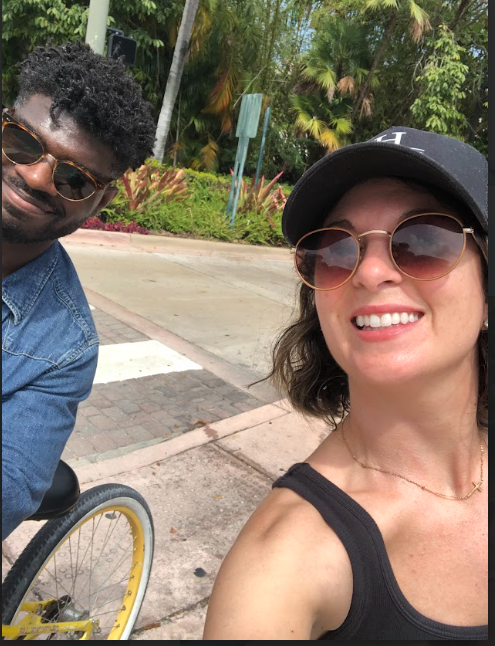




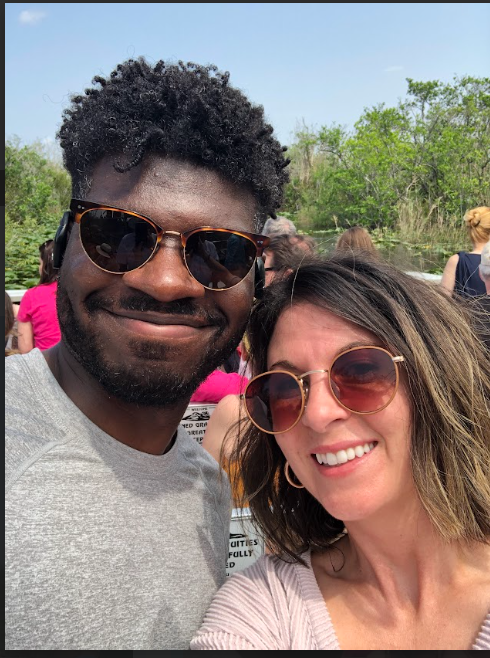




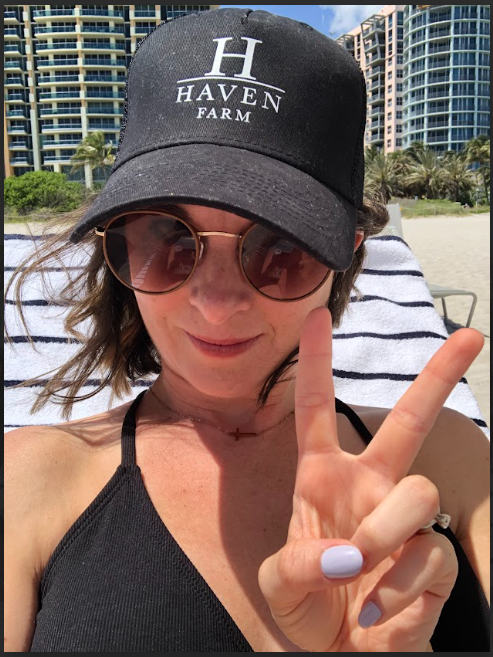


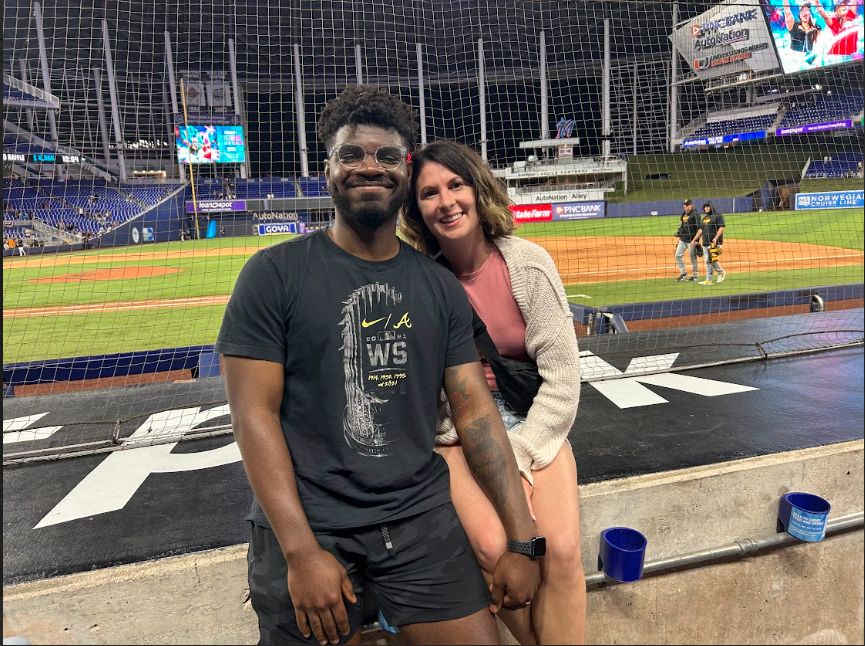


























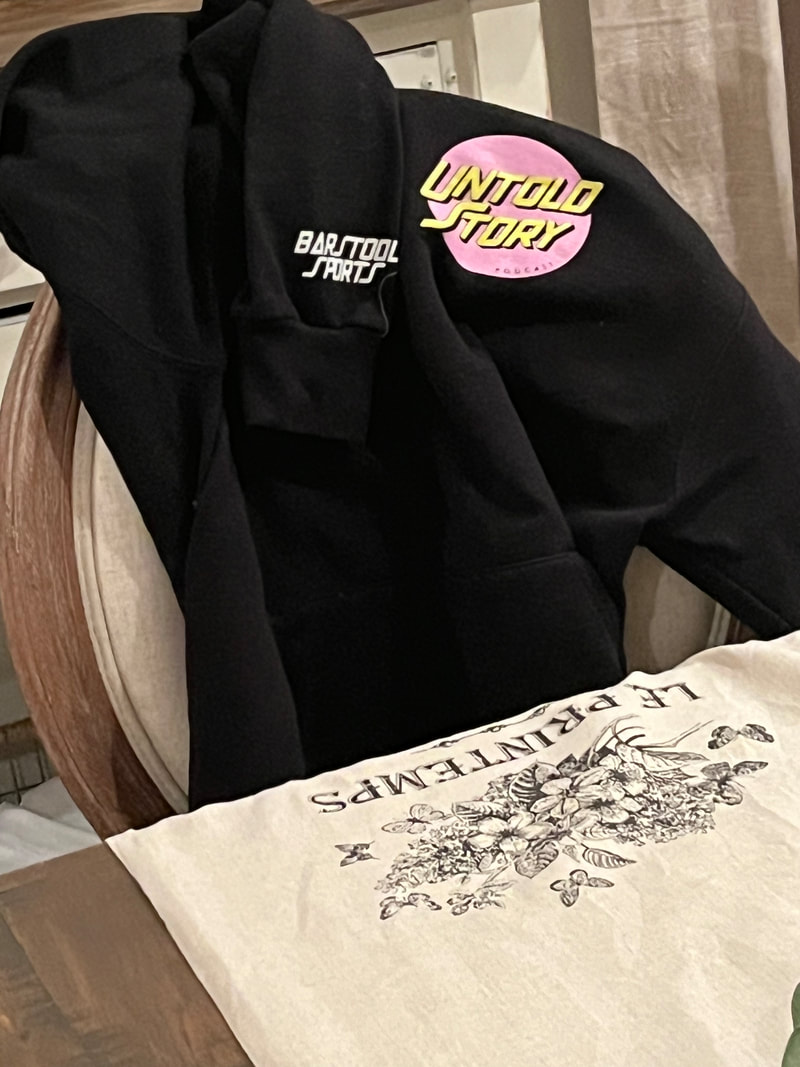
 RSS Feed
RSS Feed